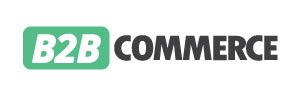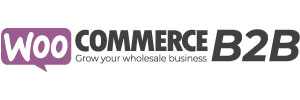The overall success of any business depends on the ability to streamline its sales procedures in today’s business environment. Businesses are finding it more and more vital to combine their online and offline sales platforms as eCommerce grows. Two well-liked programs that can assist companies in streamlining their sales procedures and enhancing their bottom lines are Shopify and Sage 300. We’ll talk about how using Shopify and Sage 300 together can help South African companies in this article.
Why Combine Sage 300 With Shopify?
Leading eCommerce platform Shopify enables companies to build and operate online stores. Sage 300 is a robust accounting and business management tool that aids in the management of inventories, money, and operations for enterprises. Businesses can profit from a number of advantages by combining these two platforms:
- Consolidated Data Management: Centralized data management is one of the main advantages of integrating Shopify and Sage 300. A single platform may be used by businesses to handle all of their sales and inventory data, doing away with the need for manual data entry and lowering the possibility of mistakes. This increases the accuracy of a company’s data while saving time and money.
- Real-Time Inventory Management: Using Shopify and Sage 300 together has real-time inventory management as a benefit. Real-time inventory tracking allows businesses to stay on top of their stock levels, preventing stockouts and overstocks. Also, it enables businesses to plan their inventory wisely and cut out wasteful expenses.
- Better Order Management: Combining Sage 300 and Shopify also results in better order management. Companies can seamlessly import orders from Shopify into Sage 300, enabling them to complete orders more quickly and effectively. This lowers the possibility of mistakes and raises client satisfaction.
- Accounting processes are also automated when Shopify and Sage 300 are integrated. Companies can save time and lower the possibility of errors by automatically transferring sales and costs from Shopify into Sage 300. Also, this makes it simpler to produce financial reports and track firm finances.

How do I Integrate Sage 300 And Shopify?
The method of integrating Shopify with Sage 300 is simple and can be finished in just a few easy steps:
- Choose a Third-Party Integration Tool: Companies will require a third-party integration tool to connect Shopify and Sage 300. Included in the selection of integration tools are Zapier, OneSaas, and VL OMNI. Companies should select an integration technology that fits their unique requirements and financial constraints.
- Link Sage 300 and Shopify to the Integration Tool: After deciding on an integration tool, organizations must link Sage 300 and Shopify to the tool. Normally, this entails inputting the login information for both systems.
- Setup the Integration: Once organizations have linked Sage 300 and Shopify to the integration tool, they must configure the integration. This entails creating procedures, setting up data mapping, and choosing the data that will be synced.
- Test the Integration: Organizations should test the integration before going live to make sure it is operating properly. In this, test orders are placed, inventory levels are checked, and financial information is examined.
- Business entities may go live after the integration has been tested. They should keep an eye on the integration and make any necessary revisions.
How to Successfully Integrate
The following pointers should be kept in mind by enterprises to guarantee a successful integration:
- Prepare Ahead: Organizations should make plans before integrating Shopify with Sage 300. They should specify their goals and objectives, decide which data needs to be synced, and select an integration technology that is appropriate for their particular requirements.
- Employers should instruct their staff members on how to use the integrated system. Data input, order fulfilment, and accounting operations are all covered in this training.
- Monitoring the Integration: To make sure the integration is operating properly, businesses should continuously monitor it. They ought to assess the financial and inventory data.
Contact the Storehub.io sales team to book a consultation.
See More on Sage Business Cloud eCommerce Integration












